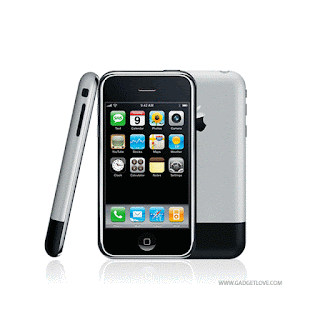One of the most innovated creations and most
evolving piece of technology is the cell phone. The most common communication
device and most frequently used, is the smart phone. The invention of the cell
phone has evolved since the 1990s and has ranged from all different types,
makes and models. The earliest types of cell phones were so big and bulky they
were referred to as brick phones. Fast forward to 2015, we have seen cell
phones evolve before our eyes and have now been one of the greatest inventions
of all times.
With the implementation of
mobile networking on cell phones, this opened a wide array of opportunities for
cell phone evolution. Most specifically, the iPhone can serve as a cell phone,
flashlight, navigation system, camera, audio player, mobile computer and more.
This idea of an iPhone dates back to 2004 when Steve Jobs, the president of
Apple was in talk with AT&T, creating the first 3G phones. According to
class lecture, the iPhone was the first fully functional 3G phone and was
exclusively available on the AT&T network. The whole idea of an iPhone was
to combine the uniqueness of the iPod, a portable audio player to that of a
cell phone, a form of convergence. The operating system of an iPhone is
referred to iOS and is similar to that of the operating system of any Macintosh
computer. Equipped with iTunes, the music library powered by Apple, the iPhone
was released in 2007 with great reviews and huge expectations. However, not
everyone was quick to take part in the Apple migration.
Migrating from standard
flip and brick phones, iPhone users found it more difficult to use older models
of cell phones. They had to adjust to the different feel and the use of a
keypad as opposed to a touch screen device. According to a study done by
PSYCHInfo.com, subjects were asked to text without looking at the phone, two
phones were used, a flip phone and an iPhone. The subjects were more likely to
pay more attention when they were texting on the flip phones (ProQuest.com).
The sleek design of the iPhone has revolutionized
itself over the past eight years. From a small handheld device that fits in the
palm of your hand such as the original iPhone, to the bigger, more prominent
sized iPhone 6 plus as illustrated in the above GIF. The basic buttons,
sleep/wake, home, volume keys and sound/vibrate switch have all remained on the
iPhone but structured differently.
Since the first launch of the iPhone,
consumers have either been pro Apple or pro Android. Working as a T-Mobile
representative, the most common customer is either an Android or Apple user. It
is interesting to see how two different makes of phones can do roughly the same
thing and serve as the same purpose, yet are very different to many people.
Most commonly, every new phone on the market is compared to the iPhone, mainly
because it is considered to be one of the first smartphones and one that has
stuck around for so long and has evolved drastically over the past eight years.
It is not
just a device for texting and Tweeting; the iPhone is one of the best examples
of convergence within technology. In the palm of your hands, you have access to
the World Wide Web, social media, news sites, a full functioning dual camera
and more. This invention has positively increased the spread of news,
communication, social networking and more. Whether you are team Apple or
team Android, one thing is the same, each smartphone has the ability to do
almost everything needed throughout your day.
References
Search.proquest.com.libweb.lib.utsa.edu,.
'Shibboleth Authentication Request'. N.p., 2015. Web. 12 Nov. 2015.


